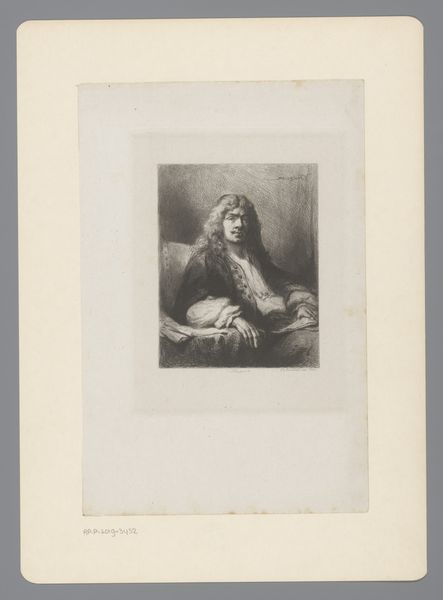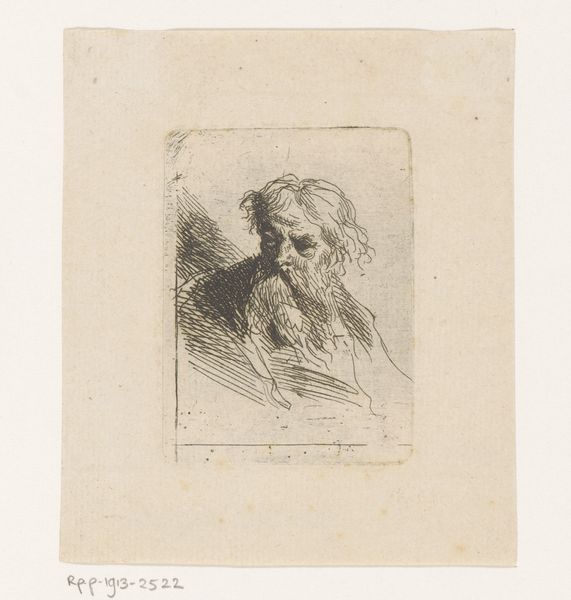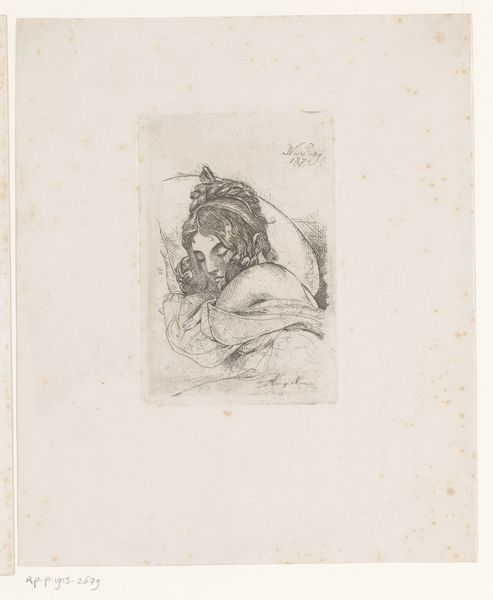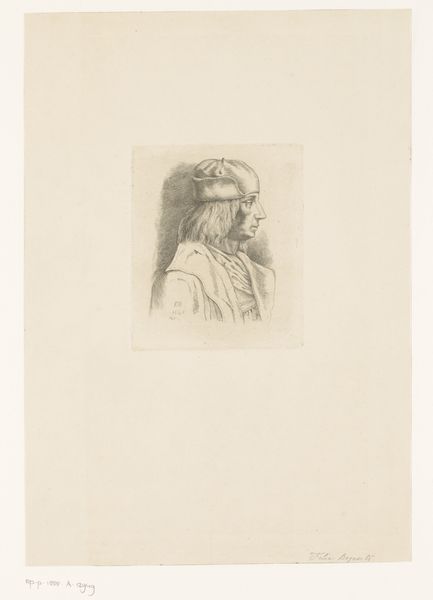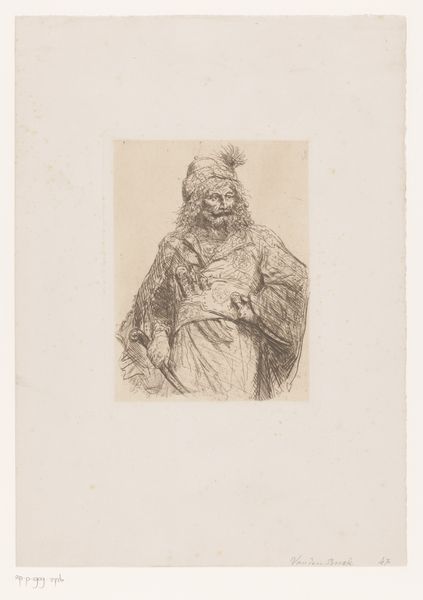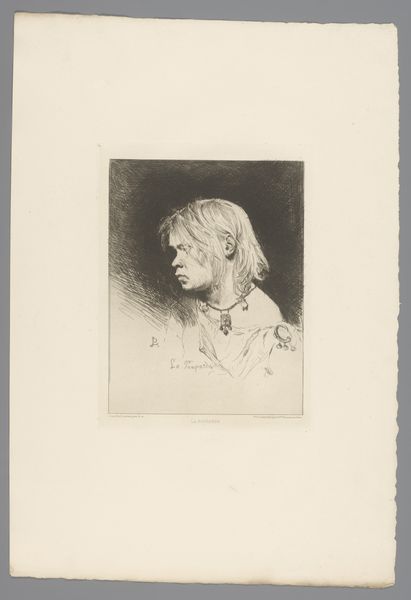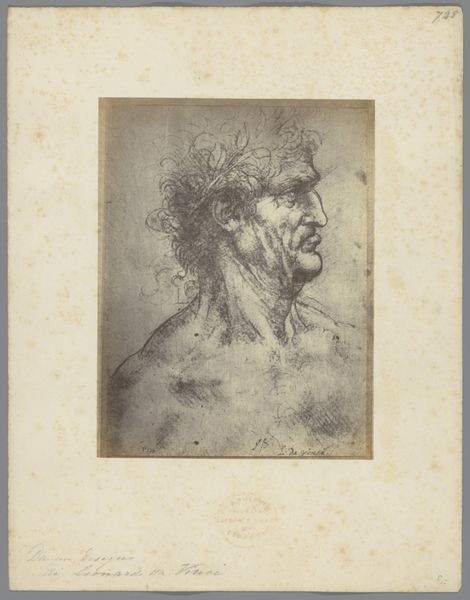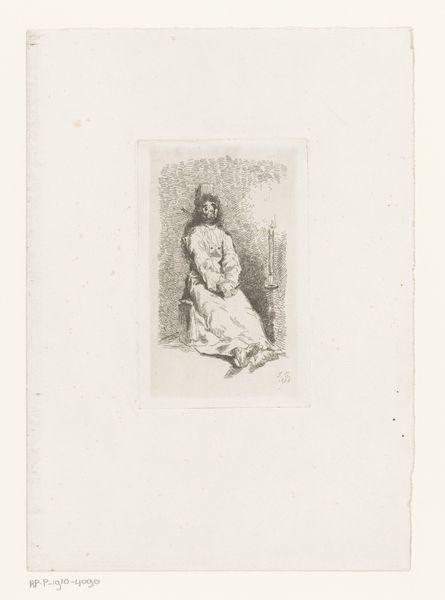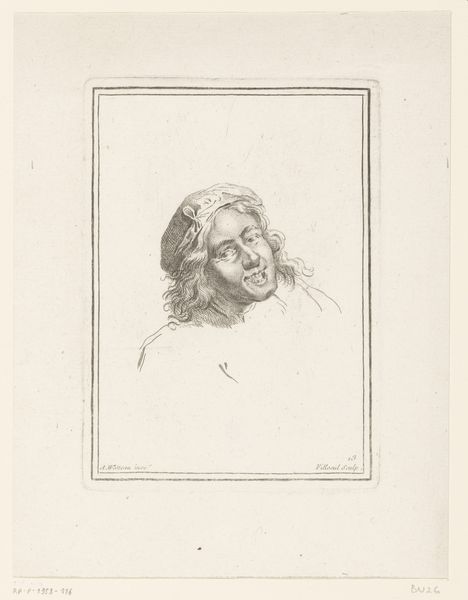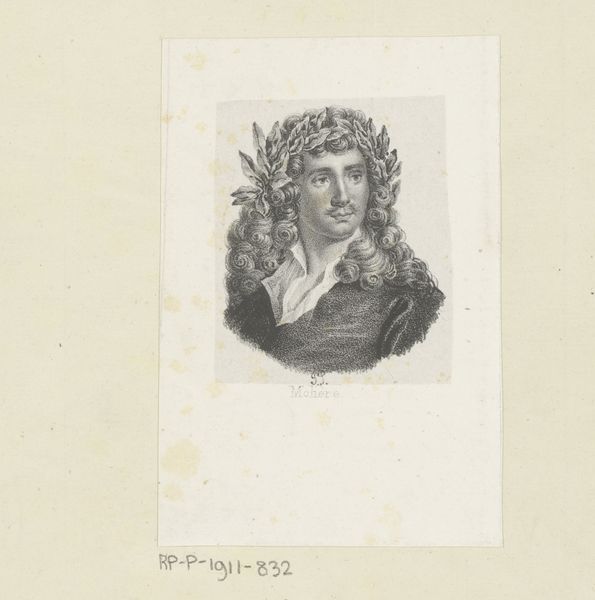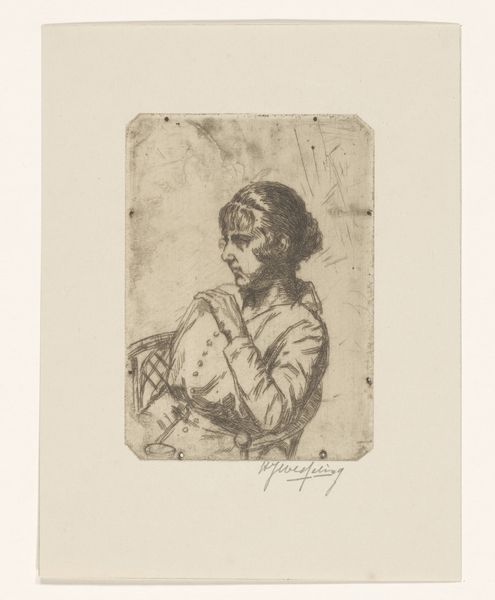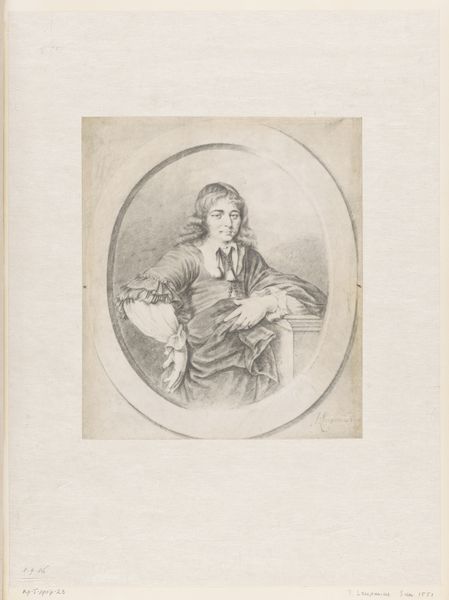
drawing, print, etching
#
portrait
#
drawing
# print
#
etching
#
figuration
#
history-painting
Dimensions: plate: 5 3/4 x 3 15/16 in. (14.6 x 10 cm) sheet: 9 1/16 x 6 15/16 in. (23 x 17.7 cm) plate: 5 13/16 x 3 15/16 in. (14.8 x 10 cm)
Copyright: Public Domain
Curator: Here we have Auguste Rodin’s etching, "Bust of Bellona," created between 1882 and 1885. Editor: There's an undeniable intensity. It has a certain unfinished quality that emphasizes movement and gives a palpable sense of immediacy, which makes the etching medium all the more relevant, I think. Curator: Indeed, Rodin’s process with etching parallels his sculptural work. The visible lines reveal his subtractive method—removing the material to reveal the image, much like sculpting. It speaks to his commitment to materiality across mediums. What's striking to me is how he's treating what are traditionally considered ‘lesser’ artistic fields with the same weight as his larger artistic endeavours. Editor: The subject matter certainly amplifies the impact. Bellona, the Roman goddess of war, frozen in a single moment of potential violence or calm resolve, depending on how you look at it. Is Rodin perhaps reflecting the tumult of his era through the gaze of ancient power, even a figure like her, who occupies a more fraught space? Curator: The ambiguity absolutely opens itself up to this. But equally relevant here is Rodin's access to the technologies necessary for the means of production—specifically his deep understanding of etching processes as an effective, reproductive medium to proliferate images of, and therefore access to, historical narratives of war through print. It isn't merely an interest in historical depiction. Editor: It pushes the idea of the power of gender in historical narratives, definitely. Bellona here isn't just a passive figure but appears powerful, resolute. Given Rodin's tendency to challenge conventional notions, wouldn’t that encourage interpretations questioning patriarchal structures by representing a commanding female figure central to a history so thoroughly crafted on masculinity? Curator: It’s about production and, really, accessibility through mechanical means. Through his skilled manipulation of tools and materials, he elevates the reproductive and challenges its dismissive categorizations, and that act remains impactful for thinking through gendered access points. Editor: Yes, his work gives agency back to female archetypes of power and disruption. Thinking through intersectionality reminds us of that potential disruption. Curator: He’s truly compelling. His exploration of reproductive methods really gives one a lot to consider in terms of process. Editor: His approach to mythos in print opens up a very fruitful and important intersectional investigation, really making me think about this.
Comments
No comments
Be the first to comment and join the conversation on the ultimate creative platform.
